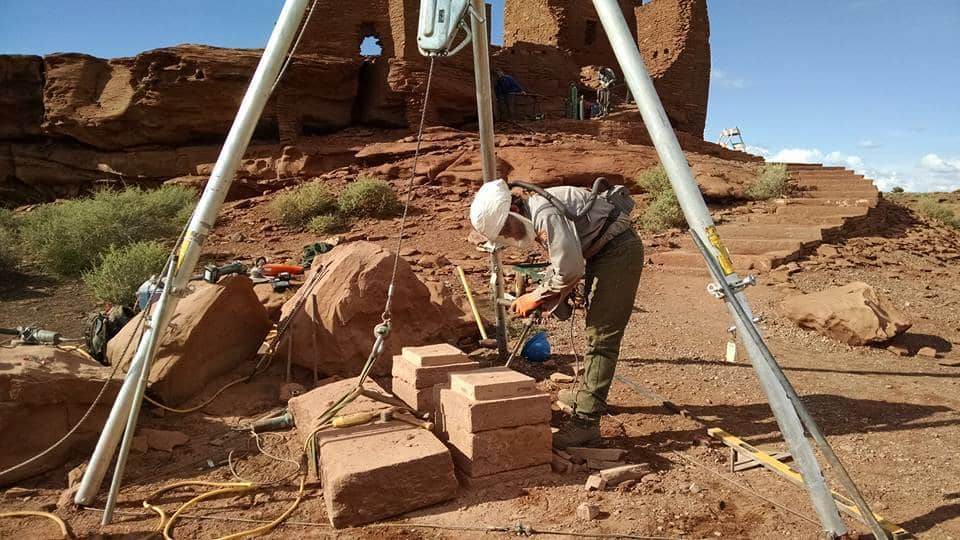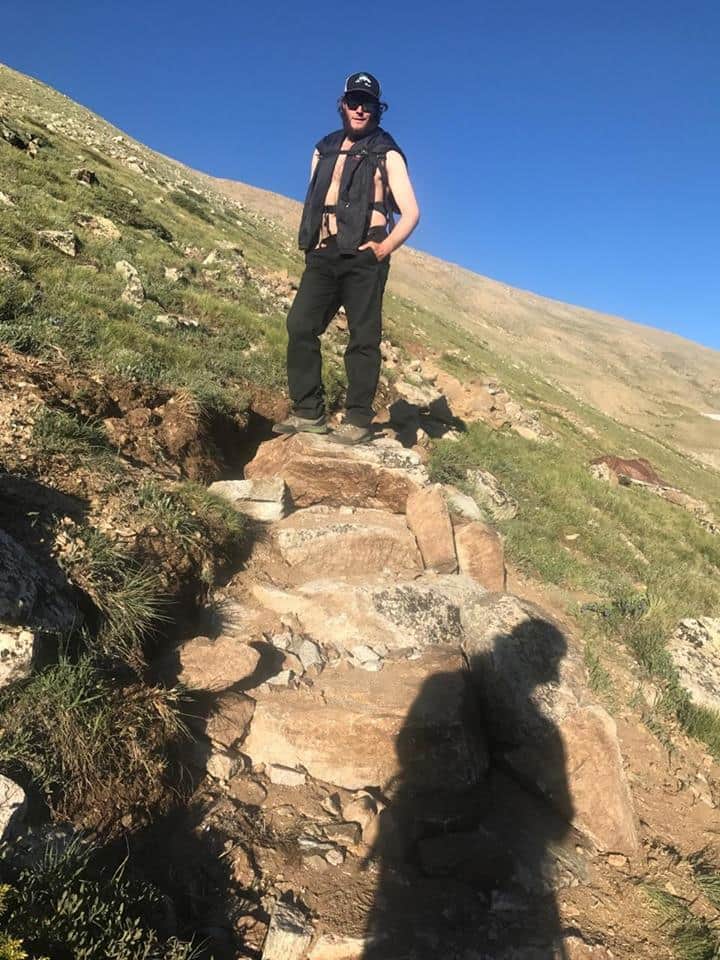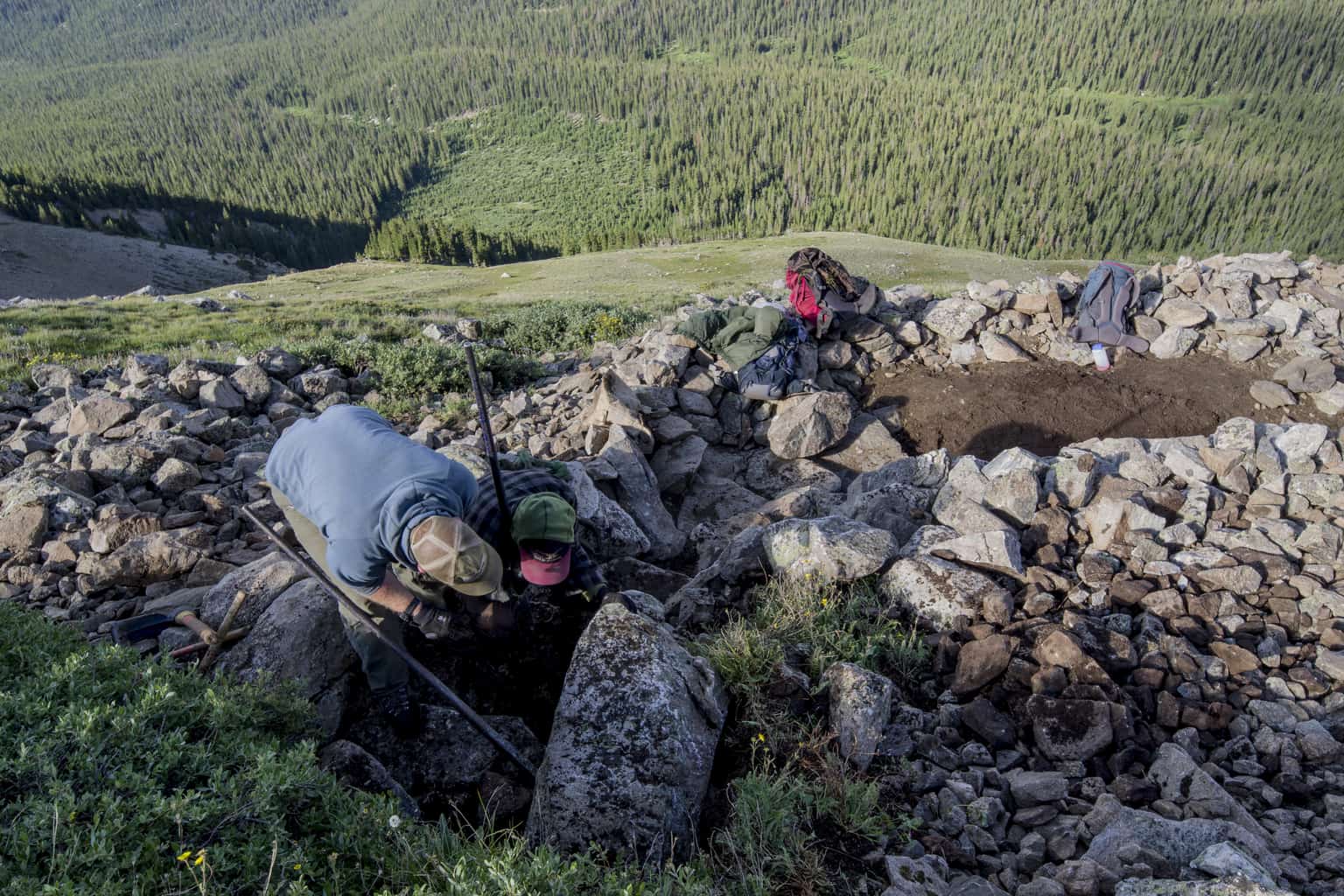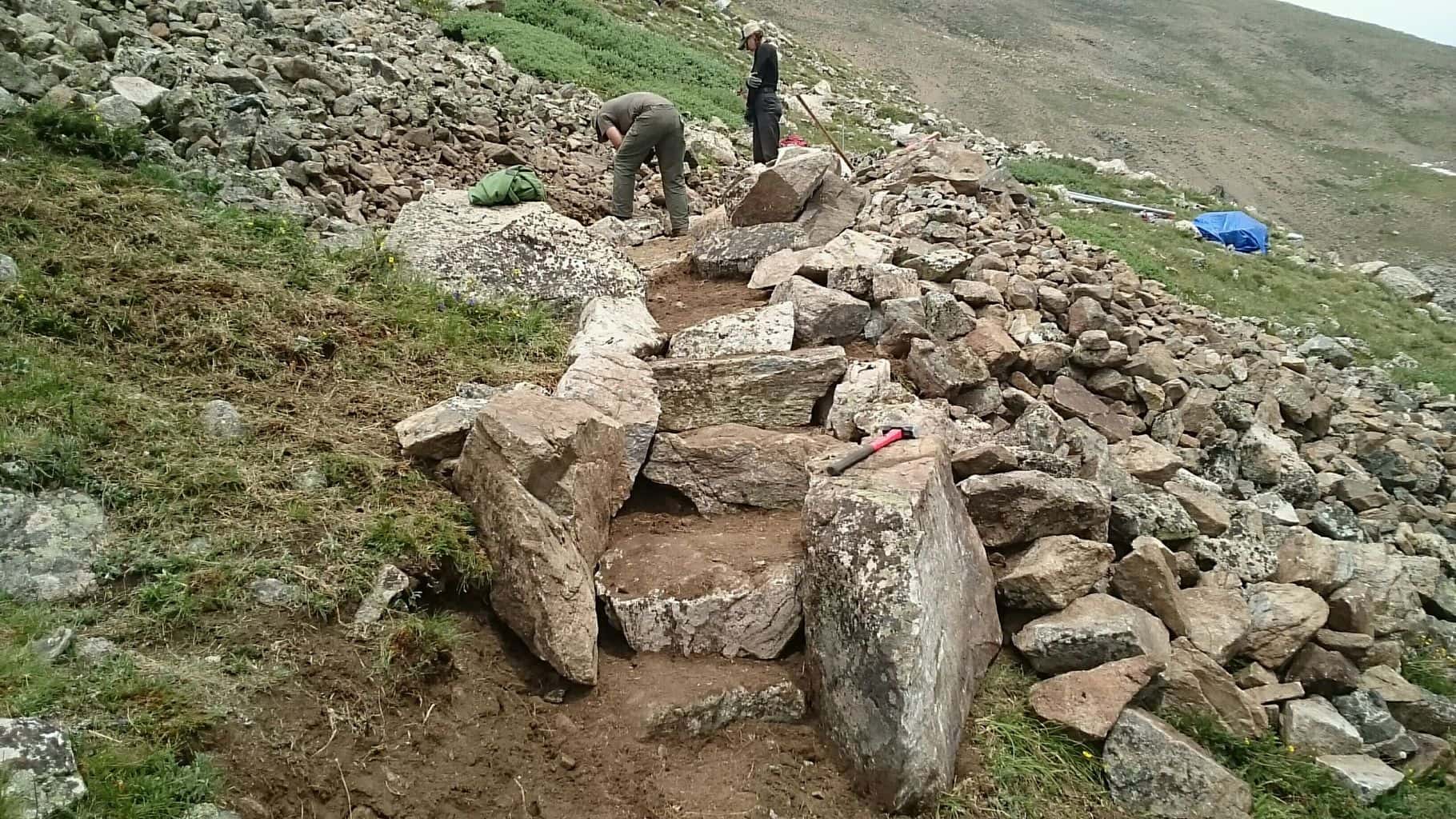
During a recent foray up Mount Harvard in the Collegiate Peaks Wilderness I heard a fellow peak-bagger on his way down lamenting the fact that every time he climbed a fourteener he felt as though he had spent all day climbing stairs. This comment, its intent in particular, sparked a rather spirited discussion between my wife (who works on a National Park Service trail crew) and myself. My partner’s position was that this young man was merely commenting on the immense physical effort that it require to climb a 14,000-foot peak. For whatever reason I assumed he was upset by the fact that he was literally walking up hundreds of constructed rock steps.
A few weeks on, my mental machinery was still spinning around stairs. In my previous career with the National Park Service I had numerous assignments where I built or renovated staircases on trails. In most cases these trails were wide, if not paved, and decidedly high traffic. The steps we built were uniform, made of concrete or precisely shaped rock, and designed to go relatively unnoticed by the foot.


Why would one build steps or stairs in a wilderness? Why would one build stairs up a 14,000-foot mountain? It seems pretty unlikely that a staircase in the backcountry would go unnoticed. There are a couple of reasons that CFI as trail builders make stairs.
The geology of peaks in Colorado is a good place to start. Any person who has ventured high into the mountains has more than likely encountered talus. What is talus? Talus is a deposit of rock. In the interest of my explanation let us pretend that this rock deposit lies on the steeply sloped side of a tall mountain. The composition of talus can vary between boulders the size of a house to pea-size gravel. A defining factor of talus, which many mountain goers can attest to, is that talus is fluid. If not consistently moving or accumulating from higher up, talus fields would likely facilitate soil deposition and plant growth. The most efficient, walkable, and stable way to build a route through a steep talus slope is to rearrange the loose boulder filled aggregate into steps.
Let us talk for a moment about steep. Trails of excessively high grades tend to erode quickly. Erosion of a trail may be present as widening, deepening, or perhaps the tread just sluffs off the side of the mountain. The trails CFI builds are designed to replace or stabilize climbing routes, and as such are designed above what is typically considered a sustainable grade. During construction our crews compensate for the steep grade by structuring almost every foot of a new construction with rock. I could probably fill the whole season of blog posts talking about sustainable trail design, but for the sake of brevity I’ll stick to a singular design feature.


The mission of Colorado Fourteeners Initiative centers around preserving alpine ecosystems. Tundra is the cornerstone of the alpine ecosystem as diverse plant communities are critical to any ecosystem. Unlike the fluid rocky talus, tundra can take decades to establish and thrives only with minimal disturbance. Building trails through tundra requires extra care on the part of the trail builder. Relatively light foot traffic can damage or destroy tundra. Steep climbing routes through sensitive flora can do an enormous amount of damage to the alpine. The best solution for this is to build stairs with quarried or excavated rock. The stairs provide tread stability and keep traffic to a fairly confined footprint.



